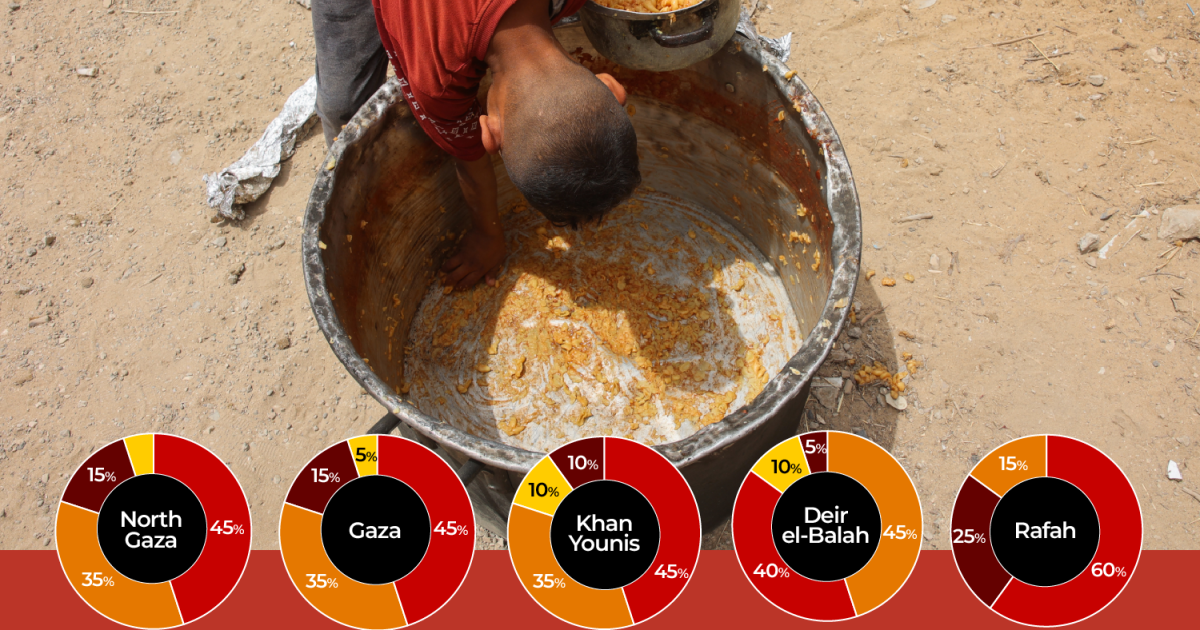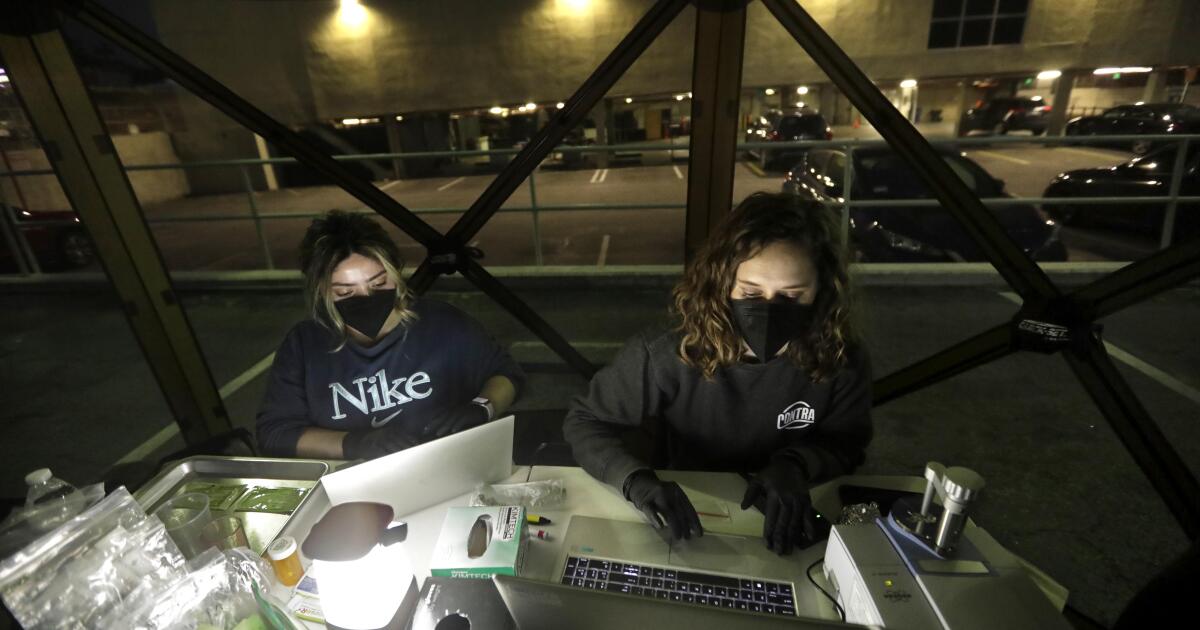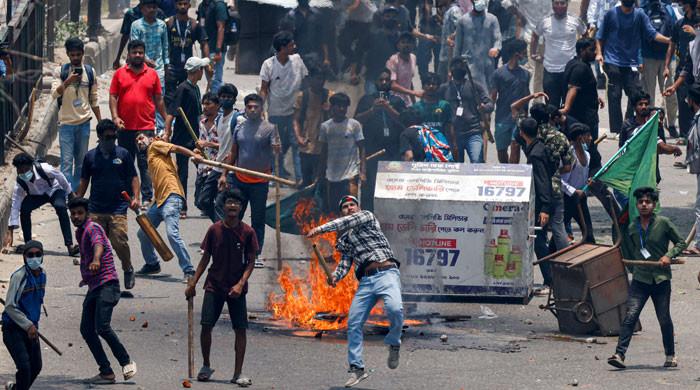Half a million people in the Gaza Strip, or one in five Palestinians, face the starvation.
The rest of the population suffers from high levels of acute food insecurity, according to a recent report of the UN Food Safety Phase (CPI).
“The risk of famine in Gaza's strip is not just possible, it is increasingly likely,” says the IPC.
For more than 73 days, Israel has blocked all the food, water and medicine to enter Gaza, creating a man -made crisis, with the IPC warning that the famine could be declared at any time between now and September.
What is famine and when is it achieved?
Hungry is the worst level of hunger, where people face severe food, generalized malnutrition and high levels of death due to starvation.
According to UN criteria, famine declares when:
- At least 20 percent (one fifth) of households face extreme food shortages
- More than 30 percent of children suffer from acute malnutrition
- At least two out of 10,000 people or four out of 10,000 children die every day due to hunger related to hunger.
The famine is not just about hunger; It is the worst humanitarian emergency, which indicates a complete collapse of access to food, water and the systems necessary for survival.
According to the World Health Organization (WHO), since Israel's complete blockade began on March 2, at least 57 children have died due to the effects of malnutrition.

What makes hunger to the body?
Israel is using hunger as a gun. A report published by the doctors of the world (Medecins du Monde) establishes this week that in just 18 months, acute malnutrition in Gaza has increased to levels similar to those found in countries that support prolonged humanitarian crises that cover several decades.
Hunger is when the human body is deprived of food for so long that it suffers often dies.
Estimates say that the body can last up to three weeks without food, but the period of time varies among individuals.
Hunger occurs in three stages. The first begins as soon as when a meal is omitted, the second occurs with a prolonged period of fasting where the body uses stored fat to obtain energy.
The third stage, often fatal, is when all stored fats have been exhausted and the body becomes bone and muscle as energy sources.

The effect on children
Children are more vulnerable to the continuous blockade of essential foods of Israel.
According to the United Nations, they have entered more than 9,000 children in the hospital to receive treatment for acute malnutrition since the beginning of the year.
IPC projects that, between now and March 2026, almost 71,000 children under five years of age will suffer from acute malnutrition, including 14,100 children who face serious cases of malnutrition.

The effect of malnutrition on children varies, but the first 1,000 days of a child's life, which includes pregnancy up to two years, are critical for the healthy development of a child.
Malnutrition leads to a height / weight proportion outside the proportion, stunted growth and, finally, death.
Earlier this month, at the Kamal Adwan hospital in Beit Lahiya, in northern Gaza, Dr. Ahmed Abu Nasir said the situation has been worse than ever due to the blockade.
“Children are in their growth stage and need certain nutrients, including proteins and fats,” the pediatrician told Al Jazeera. “These are not available in Gaza's strip, particularly in the north.”
Pregnant and infant women should also be treated by malnutrition, with 17,000 women who face this risk.

'Finding a single meal has become an impossible search'
The entire population of Gaza, around 2.1 million people who remain, face food shortages that threaten their existence.
Earlier this month, Ahmad Al-Najjar, a Palestinian displaced in the city of Gaza, told Al Jazeera: “Finding a single meal has become an impossible search.”
Despite the large number of trucks that transport vital supplies that accumulate on the border between Egypt and the Gaza Strip, the Palestinians in Gaza have resorted to the sale of garbage to pay the prices of food with a thread and deficiency.
About 93 percent of the Gaza population is at risk of food insecurity levels above the crisis levels indicated by the CPI. If the situation does not change, the CPI has indicated that of those 2.1 million people:
- 470,000 people (22 percent of the population) will face catastrophic levels of food insecurity, the most severe phase, which indicates the famine, which leads to starvation and death.
- More than one million (54 percent) will face levels of emergency food insecurity, the second most severe phase where there is a high risk of critical malnutrition.
- 500,000 people (24 percent) will face levels of food insecurity crisis, the third most severe IPC phase where households are dealing with an inconsistent food consumption to the point of resorting to extreme measures to ensure food.
In essence, in just one month, the entire population of Gaza could be hungry.
The characteristics of malnutrition and hunger are unmistakable in Gaza, with low weight children and babies. In children, severe protein deficiency causes fluid retention and swollen abdomen.

In what part of Gaza is it more at risk?
Food insecurity in the gaza strip severely affects all areas of the blocked enclave.
The 25 bakeries backed by the World Food Program (PMA) closed in early April due to the lack of supplies, and food stocks for most of the 177 hot meal kitchens are exhausted.
Certain governorates are experiencing more severe levels of hunger. According to the CPI:
- 30 percent of North Gaza faces catastrophic levels of food insecurity, 60 percent face emergency levels, while 10 percent face crisis levels.
- The 25 percent Rafah faces catastrophic levels of food insecurity, 60 percent face emergency levels and 15 percent face crisis levels.
The CPI says that the continuous block of Israel “would probably result in a greater displacement of mass inside and among the governed”, since the essential elements for the survival of people will run out.













